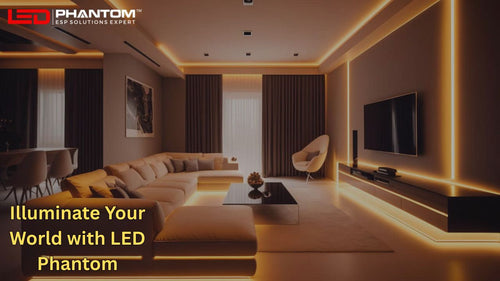How to Choose the Right LED Fixture Mounting Option
When you are looking to buy new area lights, it is important to choose the right light fixture mounts. This will ensure that your lights are secure and that they will last for a long time. In this blog post, we will discuss the different types of light fixture mounts available and how to pick the best one for your needs. We will also provide some tips on installing and using LED lights in your area.
There are two main types of light fixture mounts: surface-mounted and recessed. Surface-mounted fixtures are attached to the outside of the building, while recessed fixtures are installed inside the building. Each type has its own advantages and disadvantages.
Surface-mounted fixtures are easier to install than recessed fixtures. They also do not require any special wiring or electrical work. However, surface-mounted fixtures can be more visible from the street and may not blend in as well with your home’s exterior.
Recessed fixtures are less visible from the street and can provide a more polished look to your home’s exterior. However, they require more installation time and effort than surface-mounted fixtures. They also require special wiring and electrical work.
SLIPFITTER MOUNT
When choosing a light fixture mount, you will also need to decide on the type of slipfitter mount. There are two types of slipfitters: square and round. Square slipfitters are more common and can be used with most types of lights. Round slipfitters are less common but can provide a more secure fit for certain lights.
PEDESTAL MOUNT
Pedestal mounts are another type of light fixture mount. Pedestal mounts are used to attach lights to poles or columns. They are typically made of metal or concrete and can be either surface-mounted or recessed.
BULLHORN MOUNT
Bullhorn mounts are a type of surface-mounted light fixture mount. Bullhorn mounts are attached to the side of a building and extend out from the building. They are typically used to mount floodlights or other types of large area lights.
STRAIGHT ARM MOUNT
A straight arm mount or direct mount has a low profile. You can bolt it directly to a square pole without using an adapter. You can install a straight arm mount on a square pole that is at least 3.2 inches wide. If you have a round pole, you’ll need an adapter to mount it. Straight arm mounts can hold PLT fixtures that weigh up to 110 lbs. They’re a good choice for LED retrofitting projects with square poles because the straight arm mounts are preinstalled. However, you can’t adjust them.
YOKE MOUNT
A yoke mount is a U-shaped bracket that goes around the pole. It has two bolts that you can tighten to secure it in place. Yoke mounts can be used on both square and round poles. They’re a good choice for projects where you need to adjust the light. A yoke mount attaches to a wall or ceiling. Yoke mounts typically support shoebox lights. Common uses include parking lots and pathways as well as general site lighting. These types of mounts can also be found supporting Hazardous Location Lighting.
TRUNNION MOUNT
A trunnion mount is similar to a yoke mount, but it has a bracket that extends from the side of the pole. Trunnion mounts are extremely versatile. They can help you in situations that need creative mounting solutions. You can bolt a trunnion mount to a pole, arm, or wall. Trunnion mounts are most commonly associated with floodlights.
When choosing a light fixture mount, you will need to consider the type of light you are using, the location of the light, and the amount of space you have available. You will also need to decide if you want a surface-mounted or recessed fixture. Once you have considered all of these factors, you will be able to choose the best light fixture mount for your needs. Thanks for reading! We hope this blog post was helpful. If you have any questions, please feel free to contact us here.


